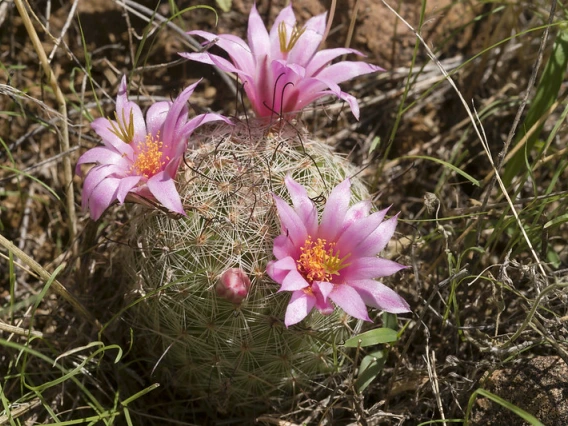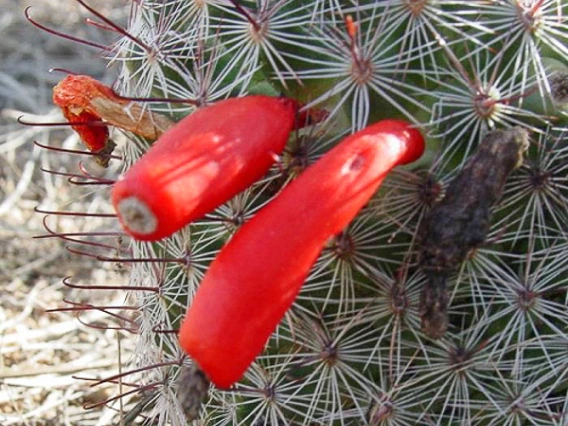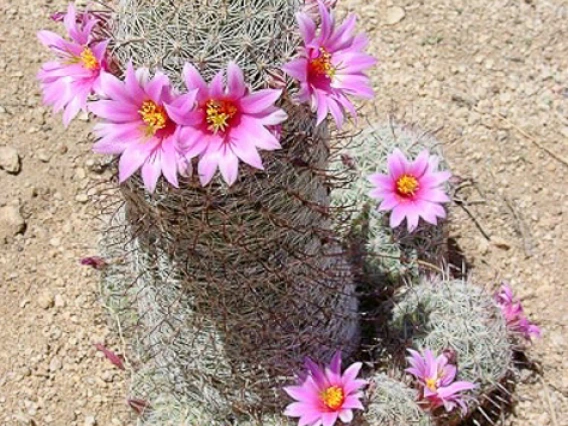


Botanical Name: Mammillaria grahamii
Common Names:
- English: Pincushion cactus
- Spanish: Cabeza de viejo
- O'odham: Ba:ban Ha-i:swigĭ
Family: Cactaceae
Rain Garden Zone: M. grahamii thrives in the top Rain Garden Zone, but may also grow well in the terrace Rain Garden Zone. (6)

Reproduced with permission from "Rainwater Harvesting for Drylands and Beyond" by Brad Lancaster, HarvestingRainwater.com
Flowering Season: April--July (1)
Harvest Season: Monsoon (4)
Planting Season: Monsoon
Landscape Cultivation: Like many small cacti, M. grahamii does not tolerate full sun (4). In landscape cultivation, plant in alkaline, well-drained soil with an eastern exposure or under the shade of other plants. Once established, little to no supplemental watering is needed (5).
Characteristics: M. grahamii is a perennial globular cactus reaching only 1 ft in size (1). There are 26-33 spines per areole, with 17 to 35 bristle-like radial spines that are white to tan in color (2). Flowers are light pink at the edges and deep pink-purple in the centers (1), growing in a circle around the stem (3) to about 2 cm in diamter (2).
Ecology: Birds consume the bright red, fleshy fruits of M. grahamii. Pincushion cactus will often be found growing underneath chollas, which shade it from the sun (4).
Ethnobotany:
Food:
The fruits of the pincushion cactus are edible and pleasantly tart, although their small size makes them difficult to obtain in quantities large enough to have significant nutritional value. Names "coyote's paws) by the O'odham (4), they have traditionally been eaten by children as snacks (2).
Other:
Traditionally, the fruits were boiled and placed inside the ear to treat earaches (2). The flowers of the pincushion cactus can be used as a rain guage during monsoon season ,as the flowers bloom within 5 days of the first summer rain and persist for about a week (4).
References:
- Wildflower.org
- SEINet
- https://cals.arizona.edu/yavapaiplants/SpeciesDetailCactus.php?genus=Mammillaria&species=grahamii
- https://www.desertmuseum.org/books/nhsd_cactus_.php#mammillaria
- http://www.public.asu.edu/~camartin/plants/Plant%20html%20files/mammillariagrahamii.html
- Lancaster, B. (2006) Rainwater harvesting for drylands and beyond. Tucson, AZ. RainSource Press.
For more information on this plant, see the Campus Arboretum species description pages.
Go to the next tour stop: desert hackberry page or Return to the main Dunbar Spring tour page

